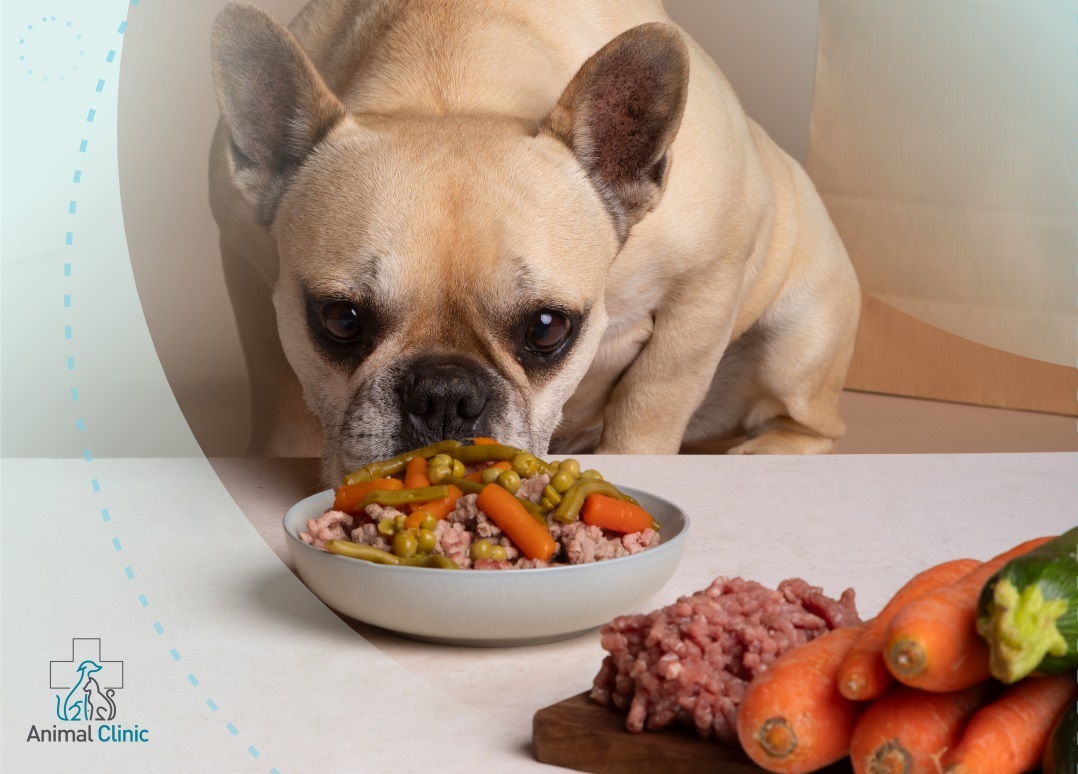- Main
- News and events
- BARF Diet for Dogs: Pros, Cons, and a Veterinarian’s Advice
BARF Diet for Dogs: Pros, Cons, and a Veterinarian’s Advice

If you are a dog owner, you’ve probably come across the abbreviation BARF. It stands for Bone and Raw Food or Biologically Appropriate Raw Food. This type of diet includes raw meat and fish, bones, offal, raw eggs, vegetables, herbs, nuts, oils, and dairy products.
According to the concept introduced by the Australian veterinarian Ian Billinghurst, a dog, as a predator by nature, should eat roughly the same as its wild relatives. But is this really true, and can the BARF system benefit your dog? Let’s explore in this article.
Pros of the BARF Diet
The BARF diet has gained many supporters who believe that dogs, as descendants of wolves, need a natural diet. Indeed, there are several advantages:
- Ability to balance the diet by consulting a veterinary nutritionist.
- Full control over ingredients and portions — the owner personally chooses what goes into the pet’s daily menu.
- Mechanical cleaning of teeth from plaque — provided the dog chews bones.
Your dog may also enjoy the variety of tastes and textures. However, in reality, the disadvantages of this feeding system far outweigh its benefits.
Cons of the BARF Diet
Despite being introduced over 30 years ago, the BARF diet’s benefits have not been scientifically confirmed by veterinarians. Moreover, several significant drawbacks either prevent dogs from switching to this diet or lead to the need for medical treatment. These include:
- Suitable only for completely healthy pets. Veterinary practice shows that most animals don’t stay healthy for long. BARF is contraindicated for dogs with kidney or liver failure, oral diseases, gastrointestinal disorders, or pancreatic problems.
- High financial costs. Creating a balanced BARF diet requires purchasing a wide variety of products, which is more expensive than high-quality dog food. In addition, consultation with a veterinary nutritionist is necessary, as it’s extremely difficult to design a complete raw menu on your own.
- High risk of infection with harmful microorganisms and parasites (worms, fungi, protozoa, bacteria, viruses). Many of these survive freezing, making raw meat and fish a serious danger to pets.
- Risk of obstructions and injuries to the teeth, oral mucosa, and gastrointestinal tract.
- Fiber deficiency. A meat-heavy diet can lead to brittle bones, constipation, and nutritional hyperparathyroidism.
As you can see, the disadvantages of the BARF diet greatly outweigh its potential benefits. Its negative consequences can be severe, often requiring therapy (including surgery) and long-term recovery.
Veterinarians’ Opinion at Animal Clinic
Our experts at Animal Clinic firmly believe that modern dogs do not need a raw diet. Thousands of years of domestication have changed their digestive systems, making them very different from their wild ancestors.
Of course, every pet owner has the right to decide how to feed their dog. However, if you choose BARF, you should first consult a veterinarian, examine your pet, and fully understand the risks. In most cases, these risks are not justified — your dog can get complete, balanced nutrition from high-quality commercial food enriched with essential vitamins and minerals.
